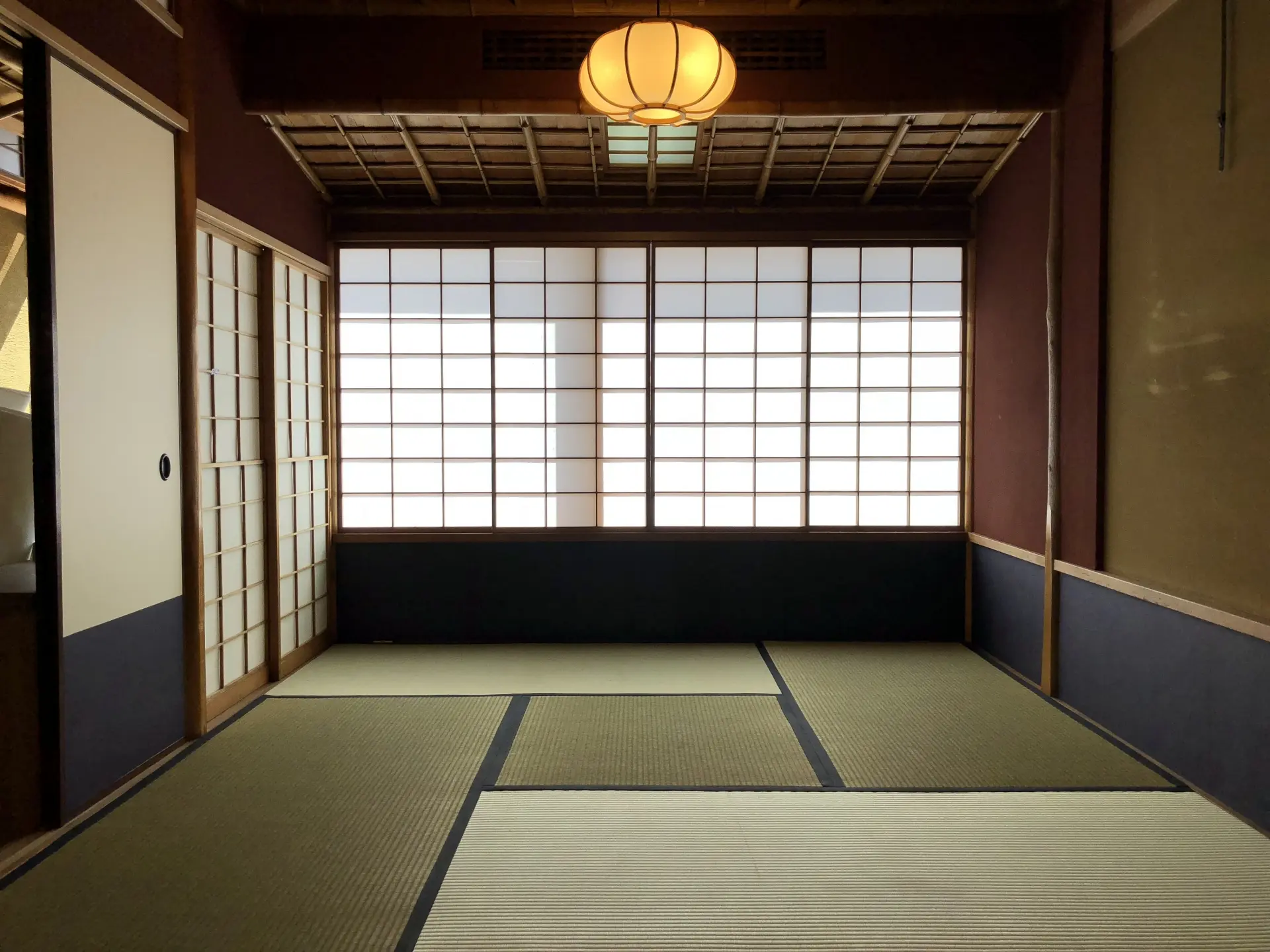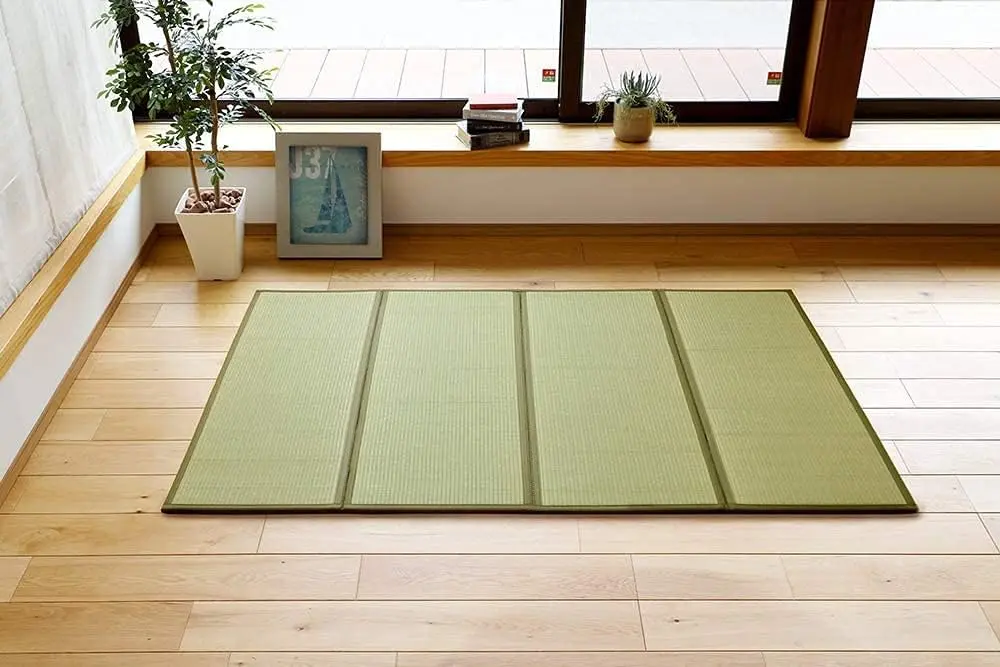Japanese tatami rooms are a window into Japan’s rich culture and history. These spaces, featuring woven straw mats, are known for their simplicity and calming vibe.
Whether you’re visiting a traditional inn or exploring a historic temple, Japanese tatami rooms are an essential part of the experience.
What is a Tatami Room?
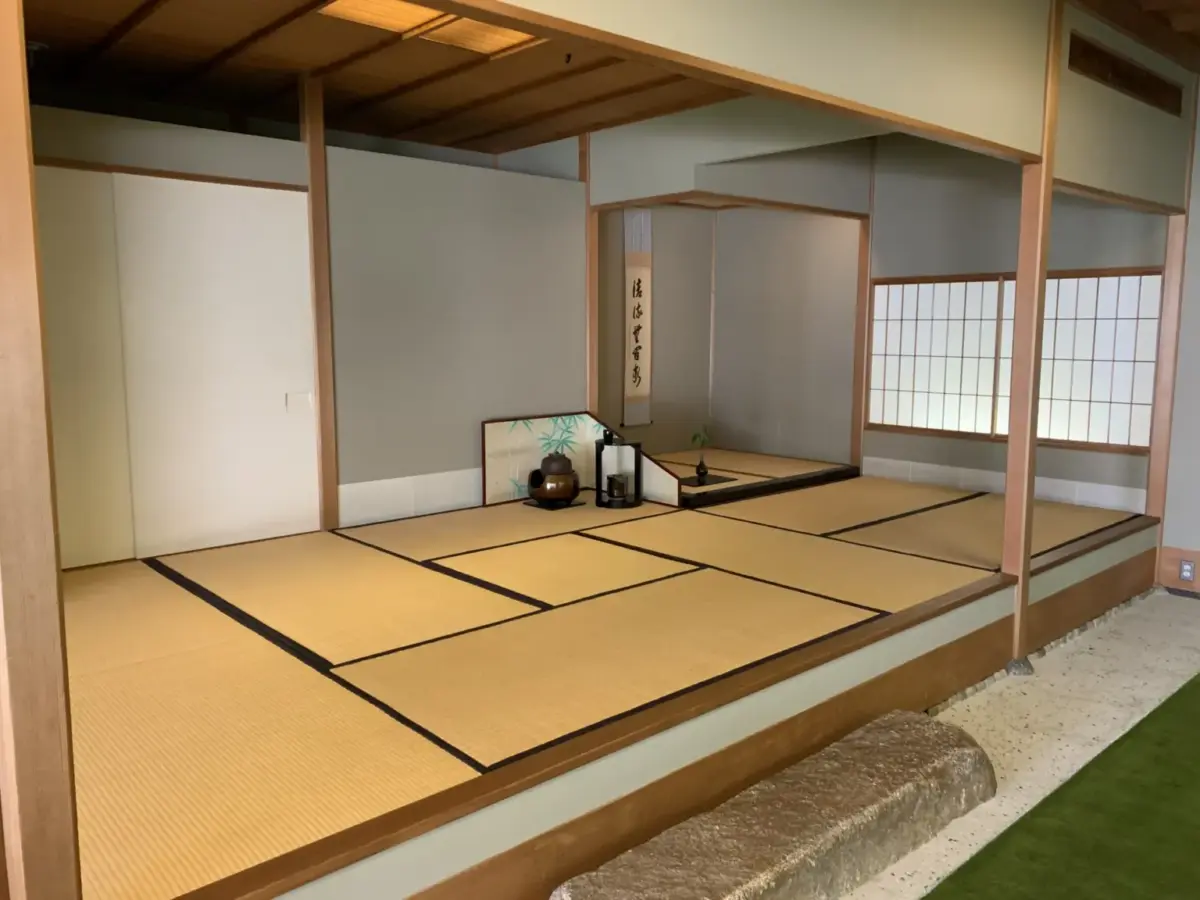
A tatami room, or washitsu in Japanese, has floors covered with soft, straw mats called tatami. These mats are made from natural materials, like rush grass, and have a unique earthy scent.
People use Japanese tatami rooms for many purposes, such as tea ceremonies, meditation, or simply relaxing. Unlike modern spaces, tatami rooms reflect a connection to nature and traditional living.
Key Features of Tatami Rooms
Each tatami room includes special elements that make it unique.
Shoji: Sliding paper doors let in soft, natural light, creating a peaceful atmosphere.
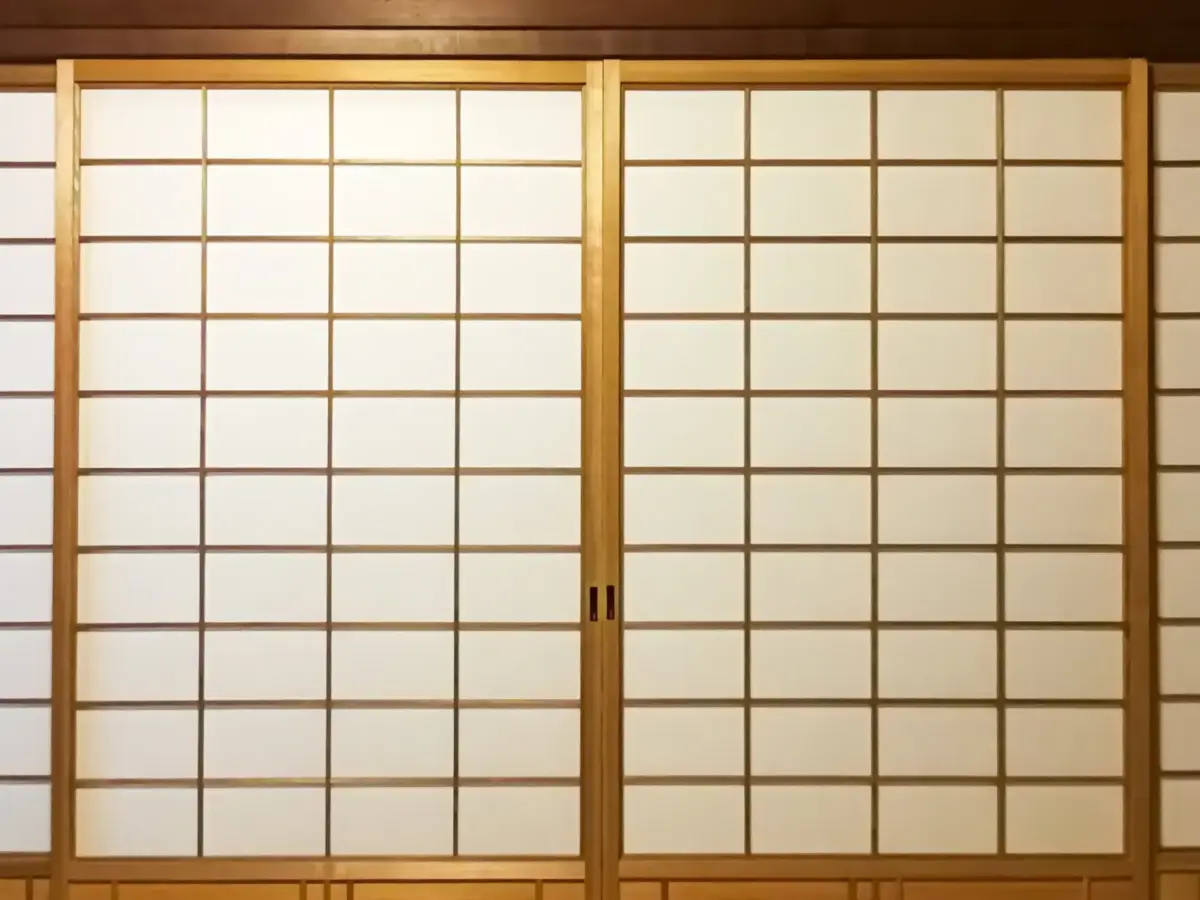
Fusuma: These sliding panels divide rooms or act as doors, providing flexibility in Japanese homes. They are often beautifully decorated with traditional designs, adding a touch of elegance to any space.
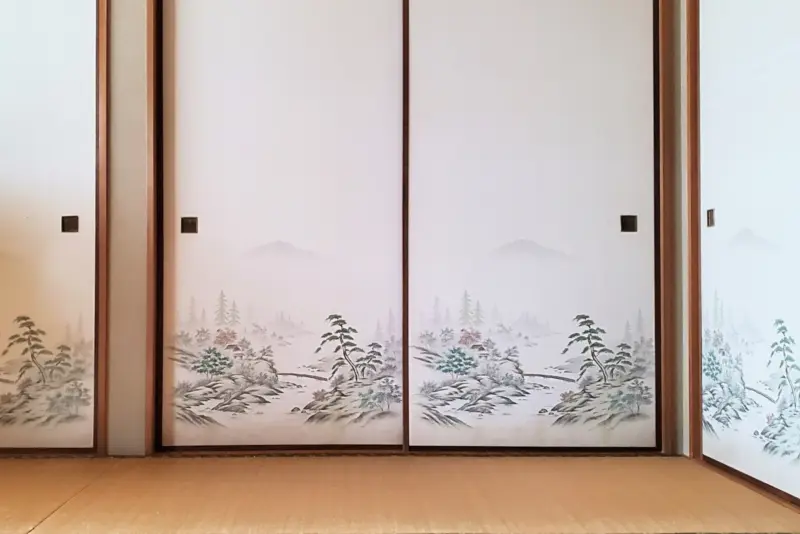
Tokonoma: This small alcove displays art or flower arrangements, highlighting Japanese aesthetics.
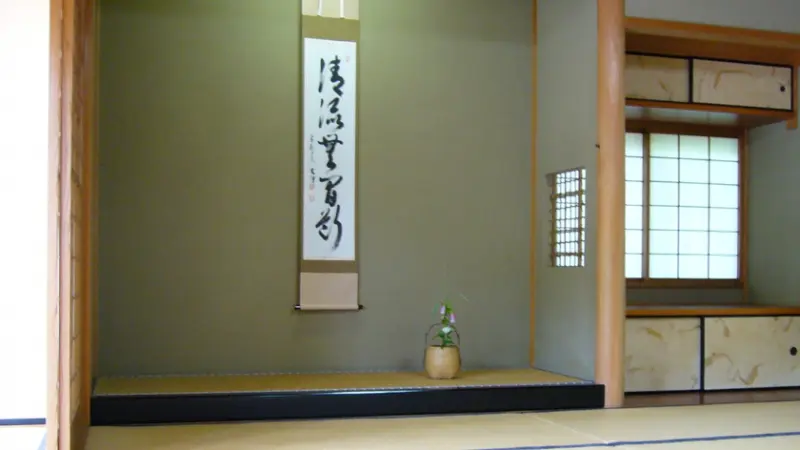
These features together create a simple yet beautiful space in many Japanese tatami rooms.
How to Enjoy a Tatami Room
To fully enjoy your time in a tatami room, follow these tips:
- Remove your shoes before stepping inside. This keeps the mats clean.
- Sit on a cushion, or try kneeling in the traditional seiza position.
- Avoid stepping on the edges of the mats to prevent damage.
By respecting these traditions, you’ll feel more connected to Japanese culture when you visit tatami rooms.
Where to Experience Tatami Rooms?
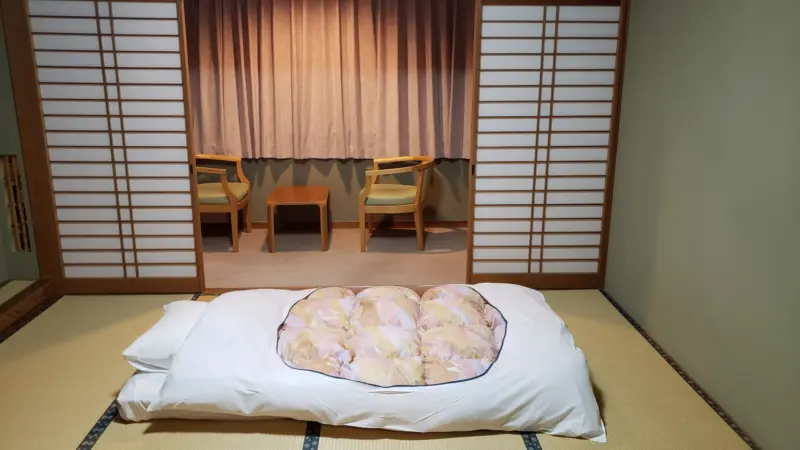
- Ryokan: Traditional Japanese inns where you can sleep on a futon laid out on tatami.
- Tea Houses: Perfect for experiencing tea ceremonies in an authentic setting.
- Temples: Explore spiritual spaces designed for meditation and reflection.
Each location offers a unique way to experience Japanese tatami rooms.
Tatami and Your Health: Why It Feels So Good!
1. Balances Humidity
Tatami mats are made from igusa (rush grass), which can absorb and release moisture.
This helps keep your room comfortable, whether it’s humid in summer or dry in winter.
2. Cleans the Air
Tatami acts like a natural air purifier!
It can absorb harmful substances like formaldehyde and nitrogen dioxide, making the air fresher and healthier.
3. Soft and Safe
Tatami mats have a soft, cushion-like texture.
This reduces the impact if you fall and is gentle on your knees, back, and feet.
It’s especially great for kids and older adults!
4. Relaxing Scent
The fresh smell of tatami is similar to the calming scent of a forest.
This scent can help you feel more relaxed and even improve sleep and focus.
5. Antibacterial Benefits
Tatami mats can fight bacteria that cause odors or athlete’s foot.
This makes them a hygienic choice for your home.
Fun Facts About Tatami
- Tatami mats are traditionally measured in “tatami mat sizes” rather than square meters.
- High-quality tatami mats can last up to 20 years if cared for properly.
- They were once luxury items, used only by aristocrats and samurai.
Tatami in Traditional Sports: Judo and Shogi
Judo on Tatami
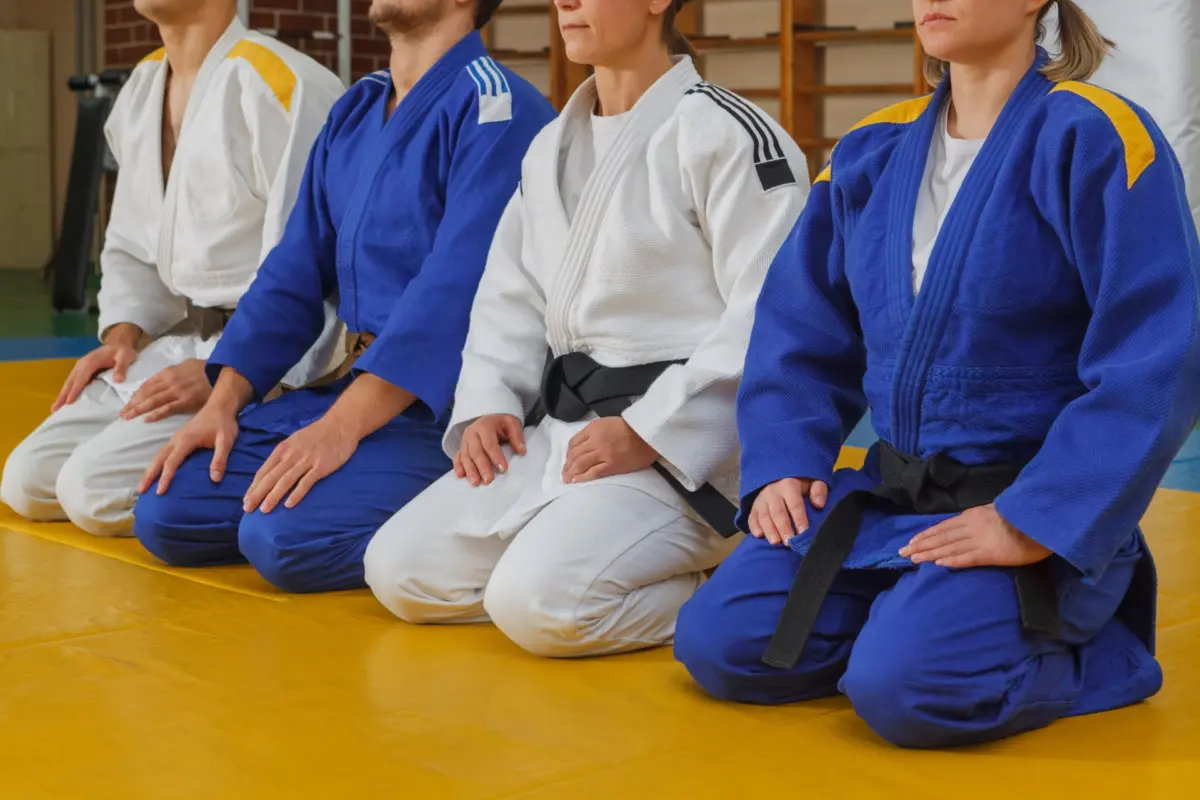
In judo, athletes practice and compete on special tatami mats.
These mats are soft and help absorb the impact when athletes fall or get thrown.
They make judo safe while keeping its connection to Japanese tradition.
Shogi Matches on Tatami
Shogi, also known as Japanese chess, is often played in tatami rooms.
Players sit on cushions and focus quietly on the game.
The calm and natural feel of tatami helps players stay relaxed and think clearly.
Why Use Tatami?
Tatami is soft, natural, and peaceful.
It’s perfect for sports like judo or quiet games like shogi.
This is why tatami is still a big part of Japanese culture today.
| Company Name | URL | Services |
|---|---|---|
| Morita Tatami-mat maker | Website | Custom tatami mats, international shipping, and Japanese-style interiors |
| Kuboki Tatami | Website | Handcrafted tatami mats, online store, and worldwide delivery |
| Tatamiser | Website | High-quality tatami products and global shipping |
FAQ: Tatami Rooms
Traditionally, people kneel in the seiza position. However, sitting cross-legged is fine too.
Yes! While modern homes may not have them, you can still find them in inns, temples, and cultural venues.
Replacing mats in a 6-mat room costs around ¥52,200 ($350) for basic mats.

